Diary of a Guide…Thermals, Lights and Looking for Harry!
As the temperature plummeted this week, it was finally time to dig out the tour guide’s winter warmer – the thermals! Yep, once winter hits thermal underwear is a lifesaver, and I’m not just talking thick socks. Oh no, I go the whole hog; long-sleeved thermal vest, thermal hiking socks and, the most glamorous part of all, thermal long johns. Now you may mock, but if you’ve ever guided a group round Millwall Dock in the snow (as I did a couple of years back) then thermals are essential!
I topped the thermals with trousers, a thick jumper, padded coat (think duvet diva), scarf, hat and woolly gloves to take a group to the Tower of London – one of the coldest places as the wind whips off the river Thames.
A couple of days later, and still wrapped up warm, I thought I’d make the most of a quieter time of year to brush up on one of my bete-noirs – Oxford! Now Oxford is a great place and my visitors love it when I take them there, especially those from overseas, because it’s old, picturesque, has loads of literary connections and is full of history. But all those colleges (there are 38 of them) look the same and it can be very confusing.
So time to sort out All Souls from Worcester, Harry Potter from Alice in Wonderland, and the Sheldonian Theatre from the Radcliffe Camera (which is not actually a camera by the way, it’s a library).
First up was Christ Church, founded in 1525 by Cardinal Wolsey as Cardinal college and re-founded complete with a name change following Wolsey’s fall from grace. Probably the best known of all the colleges, Christ Church is heaving during the summer months as hordes of overseas youngsters troop through the Great Hall just to take a photo of ‘Hogwarts’ (it was used in the films as the dining hall).
The day I visited, it was virtually deserted and I could take my time admiring the medieval hammer beam ceiling and looking at the portraits that line the walls. You’ll find Charles Dodgson (aka Lewis Carroll), who spent most of his life at Christ Church as an undergraduate and then mathematics lecturer, just inside the entrance door. You won’t find Harry Potter anywhere (loads of muggles but no wizards), but if you look carefully you will find the Cheshire Cat and the Dodo from Alice in Wonderland carved into two of the dining chairs.
Despite all the tourists, three meals a day are served here and the undergraduates eat well, and for a very reasonable cost – the lunch menu the day I visited had sweet and sour pork for £1.75 and salmon in a pinenut crust for £2.50.
The Cathedral, which many tourists bypass, is also well worth a visit with its shrine to St Frideswide, patron saint of Oxford and who’s priory was originally on this site, complete with Watching Loft to ensure pilgrims respected the Shrine.
Colleges then came thick and fast as I made my way through as many as I could (not all are open to the public – this is a working university after all). Magdalen (pronounced ‘mawdlin’) with its New Building (well, it only dates from the 1700s), unusual stained glass window in the chapel, outdoor pulpit and herd of fallow deer is worth the walk to the end of the High Street.
And at All Souls, founded to remember the fallen in the Hundred Years War with France, the porter was incredibly welcoming. We empathised with each other over the summer hordes, before he informed me that the wonderful sundial in North Quad was in fact upside down! According to the porter it was moved by architect Nicholas Hawksmoor in the 18th century, but the website states it was moved in the Victorian era – these things, as my old architecture lecturer used to say, are “lost in the mists of time”!
Having trooped through the colleges, there are many ways to tell them apart and each one has its own quirk; Brasenose has noses (large, bulbous noses on tiny heads – lots of them), New College isn’t new at all (it’s one of the oldest founded in 1379), Merton has a Quad called Mob (no one really knows why – it may have referred to the undergraduates who lived there) and Hertford’s buildings are connected by the Bridge of Sighs.
‘Colleged’ out, I explored the Covered Market with its fresh fish stall, butcher’s, pie shop and greengrocer’s. Shops as they used to be when I was a kid, plus the most wonderful cake shop where you can watch through the windows as they make and ice amazing cakes.
My visit finished with a trip to Oxford Castle Unlocked – the remains of a Norman castle, built by Robert d’Oilly in 1071. The castle can only be visited on an official tour, so along I went on a guided tour with convicted felon ‘George Strap’. As a guide, it’s always interesting to see others in action and 18th century George delivered an informative and entertaining tour. In full costume too – you don’t get that on my tours!
The history of the castle was brought to life as we climbed to the top of St George’s Tower and down to the crypt; the siege conducted by Stephen and the escape of Matilda during the 12th century civil war, and its use as the royal court and home to King Charles I during the English civil war in the 1600s.
Tales of prisoners, their crimes, punishment and execution followed, from the early days as a castle prison, then a House of Correction and finally as HMP Oxford, with the last hanging in 1952 and the prisoners still occupying the Victorian cells until it finally closed in 1996.
Back in London, I joined the thousands who turned out in the bitter cold to marvel at Lumiere London and what a show it was! From the Circus of Light in King’s Cross, to the Garden of Light in Leicester Square, like everyone else I was entranced. Got to confess, I was a bit disappointed with Plastic Islands in the fountains at Trafalgar Square – I know it was symbolic of the marine litter in the Pacific Ocean but, philistine that I am, to me it just looked like a load of plastic bottles chucked in the fountain.
But my absolute favourite was the Spirit of Light by Patrice Warrener on Westminster Abbey. As someone who regularly guides there, I loved the colours that illuminated the West Front and the statues of the 20th Century Martyrs. Reminiscent of the medieval era when bright colours would often have adorned the sculpture and walls of palaces – it was truly awe-inspiring.
However, the cold weather looks set to continue, so if you see a tour guide waddling round London looking like a Tellytubby, I didn’t put on weight over Christmas – it’s all those thermals I’m wearing.

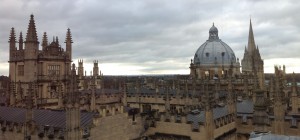
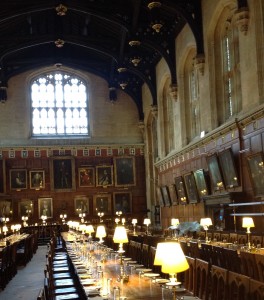
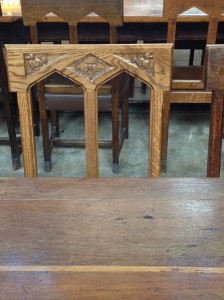
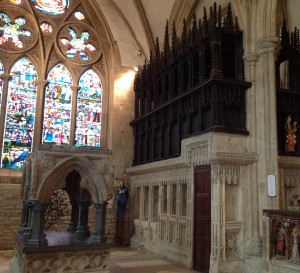
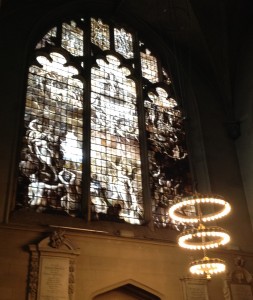
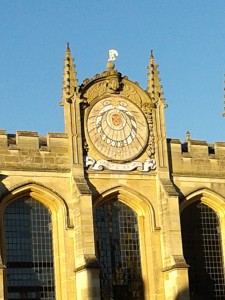

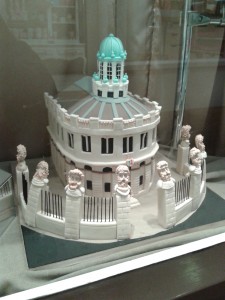
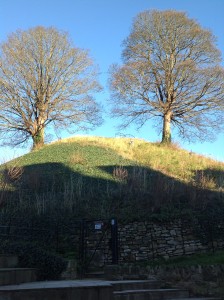
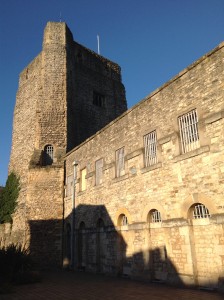
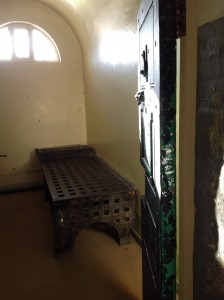
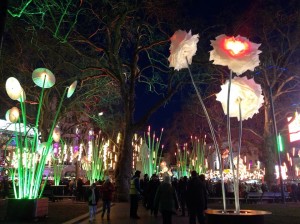
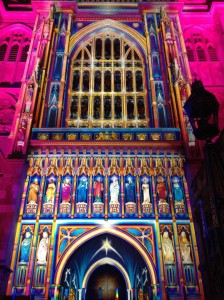

Leave a Reply
You must be logged in to post a comment.